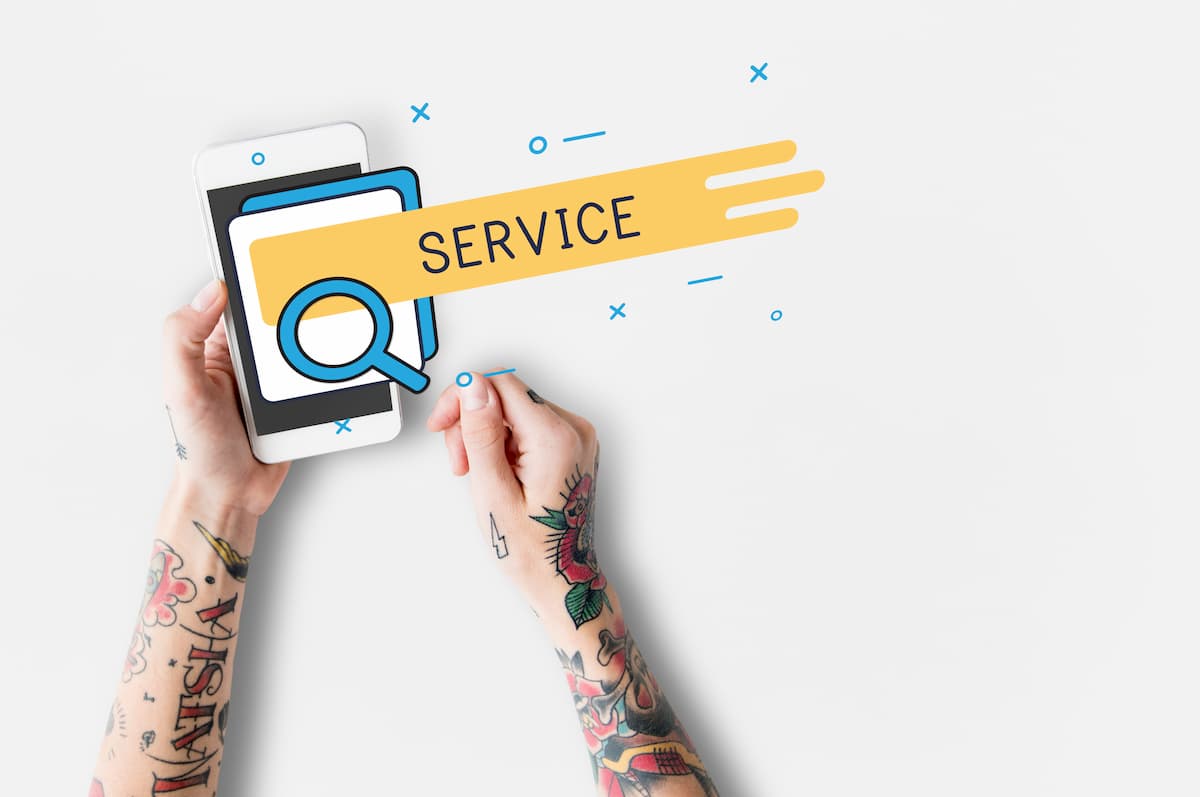Real quick, think about all the ads you’ve seen while surfing the internet. How many can you remember? It’s probably only a few, and even for these very few, you probably wouldn’t remember their intricacies. Reason being that you don’t have any strong interaction with them. However, businesses could solve this problem by adopting an experiential marketing strategy. This is because through it, they can create memorable interactive campaigns for consumers.
So first off, you should know exactly what experiential marketing is. Well, sit tight because I have compiled every single detail to help you excel in adopting the experiential marketing strategy in this post.
Now let’s get down to it…
What Is Experiential Marketing?
Experiential marketing is a marketing strategy employed by businesses to increase customer engagement by creating memorable and attractive public displays. Hence, foster consumer emotional attachment to their brand. Clearly, experiential marketing is focused on consumer enthrallment. And to achieve this the experience should be engaging and compelling.
And talking about customer enthrallment, nowadays, some companies have gone to the extent of using virtual reality technology in their experiential marketing. Now, getting acquainted with this new tech, gets consumers to talk about it and how they experienced it. So, they share their experience with family and friends and hence, help the company in their marketing campaign. I know this might be a mild turn off if you’re a small business owner or a start-up that can’t afford this tech. But chill your nerves cos we’ve included, in this post, some examples of experiential marketing that never used this tech but were really successful.
What Are the 11 Pillars of Experiential Marketing?
It is made up of 11 pillars: marketing strategies that are exceptional, shareable, memorable, relatable, memorable, relevant, personal, able to be targeted, connectable, adaptable, engaging, and credible.
What Is the Goal of Experiential Marketing?
Experiential marketing aims to create a lasting impression of the brand in the minds of consumers in order to encourage brand loyalty and, eventually, sway their purchasing decisions.
Experiential Marketing Strategies
Without an effective strategy, any experiential marketing has the potential to be a big flop. However, we’ve come up with some proven methods that will serve as a blueprint for you in developing your own experiential marketing strategy.
-
Set an Unequivocal Goal:
Without this, there won’t be a benchmark to compare the success of your campaign. So, this should be a priority in your experiential marketing strategy. An example of an unequivocal goal is an increase in sales by at least 20% after the campaign and not just an increase in sales.
-
Understanding Your Target Audience:
You have to understand your target market segment, what they want to hear, what they need, and also effectively communicate in their jargons to pass your message across unequivocally.
-
Involve Adequate and Competent Hands:
Lots of tasks are involved in developing an experiential marketing campaign. So, involve adequate and experienced hands in the planning.
-
Come Up With New Ideas:
Nobody likes stale things. In fact, most audiences consider overused old trends dry and boring. So, don’t copycat your competitor instead learn from them.
-
Create Awareness Using Different Social Media:
At this point, you inform the public about the event. Hence, upload event-related videos on your different social media platforms. If you want to increase your awareness reach you can use social media ads.
-
Consider Multiple Events as Part of Your Campaign:
This will help increase your reach to more people. However, it doesn’t come without a price and that’s an increased marketing budget.
-
Set up Metrics to Assess Your Effectiveness:
Set up some metrics to enable assessment of your progress. For example, the level of social media mention.
What Are 5 Ways That Make Experiential Marketing Successful?
Find the right audience and put money into what they like.
Match your goals to the needs of your audience.
Create a memorable experience.
Capitalise On Engagement.
Follow how well the campaign is doing.
What Are the 5 A’s in Marketing?
The five phases (awareness, appeal, ask, act, and advocacy) named by Dr. Philip Kotler allow marketing and sales professionals to develop a map of the customer’s requirements and priorities during the various stages of their purchasing process.
READ ALSO: HOW TO CREATE WINNING MARKETING PLAN FOR AFRICAN BUSINESSES
Benefits of Experiential Marketing
It’s a fact that experiential marketing, properly conducted, has very wonderful benefits both to the consumer and to the business. Hence, a win-win for all. So let’s look at some of these benefits of experiential marketing.
-
An Active Understanding of the Product:
One main aim of all marketing campaigns is to educate consumers about the product and benefits they would gain from using it. However, this might be difficult to achieve using marketing campaigns like social media ads since most people use ad blockers on their phones and the few that don’t use it will probably skip the ad. But by creating an attractive and engaging experiential marketing campaign; consumers are more likely to actively seek understanding of that product.
-
Makes Companies Outstanding:
Experiential marketing is popular among many companies. And, by using experiential marketing a company can make its brand outstanding from others.
-
Increased Social Media Mention:
People like sharing their experiences on social media especially the cool ones. And because social media has a powerful ripple effect, you post on your wall, your friends see it on their feed and share on their wall too. This can massively increase your company’s social media mention.
-
Media Attention:
Media like trending stories. And if your marketing awareness is trending on social media like Twitter. Different media will like to carry the story. So, this increases publicity.
-
Increase in Sales:
The survey by event track in 2015 shows that out of all the brands that invested in experiential marketing. 80% saw a return on investment of 3:1 and 16% saw a 20:1 return on investment. So, this is the high yield benefit of experiential marketing.
What Are the Challenges of Experiential Marketing?
One of the most difficult challenges for experiential marketing campaigns is converting a brand—a company’s identity—into physical space in such a manner that memory generation occurs. The issue is that a brand is not always seen as an experience.
How Do You Create Experiential Marketing?
Promote social sharing. Extending the reach of your experiential marketing strategy through social media may have a significant impact. To expand your reach, ask participants to post images and tag your brand. Even after the campaign is ended, take images and videos for future marketing ideas and social media sharing.
READ ALSO: LOW-COST ADVERT STRATEGIES
Examples of Experiential Marketing
Many businesses adopt the experiential marketing strategy because of its effectiveness in getting things done. Below are some examples that you can learn from.
-
Red Bull: Stratos
In other to show the public who’s the extreme sport’s boss, Red Bull sent an Austrian skydiver, Felix Baumgartner, to the stratosphere using a large helium-filled balloon. This event set a world record of highest SkyDrive, 24 miles above the earth’s surface. The media was charmed, the public was thrilled. And it became the YouTube live stream with the highest viewership. So, lessons learned. Suspense is powerful it creates a strong memory print of an event. Also, if your campaign is gonna put your company in the history books, why not try it out?
-
Coca-cola: Small world machines
Sometimes experiential marketing shifts attention from the product to solving environmental problems. Coca-cola exemplified this through its high-tech vending machines in New-Delhi, India, and Lahore, Pakistan. So, these machines enable face-to-face interaction between customers in the two locations. Clearly, the aim of this was to bring a positive change in the broken relationship between the two countries. Hence, the take-home from this. It’s not written in any book that your experiential marketing will be about your product.
-
Zappos: Google cupcake ambush
Co-branding with a big name can have an exponential effect on a company’s rating. Zappos realized this and capitalized Google’s cupcake experiential marketing campaign. In which Google promoted its new photo app by giving out cupcakes to people who will take photos with the app. But what’s better than a free cupcake? Free gear, like wristwatches, gloves, shoes, etc. So, Zappos placed a cardboard box next to Google’s truck which dispensed a free cool gear when offered a cupcake. Take-away: You can identify with brands that have customers that can be interested in your product but ain’t yet assessable to you.
-
Smirnoff: comic book party
In an out of the box experiential marketing campaign. Smirnoff decided to bring the characters of a comic book to life in its ‘Smirnoff comic book party.’ This party gave attendees a whole new experience of living within the frames of comic books. With Smirnoff being the party drink, the brand was able to attach itself to a whole new fun experience that creates memories in the minds of the attendees. Also, the fantasy of this experience makes it perfect for the market segment of ages 19-29. Take away: Go nuts to intrigue your target market. Also, keep the experience relevant to the attendees.
READ ALSO: The Google Brand Strategy: How it Dominates Markets
Conclusion
I hope this post was able to give you a clear picture of how Experiential marketing works and how beneficial it would be if you adopted this strategy. Reach out in the comment session for any clarifications.






